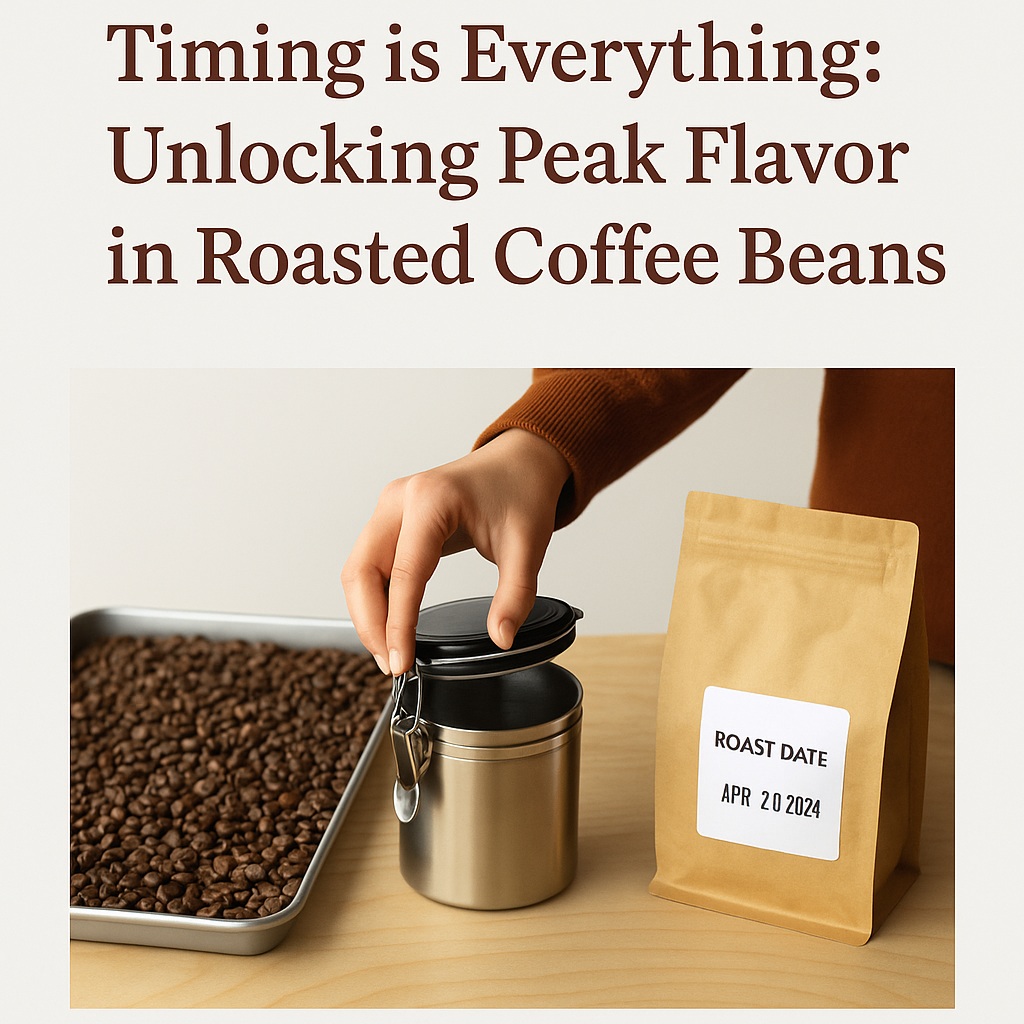Timing is Everything: Unlocking Peak Flavor in Roasted Coffee Beans
At EssentialServices.coffee, we understand that crafting a superior cup of coffee is a nuanced art - one shaped by origin, roast, and brewing technique. In our ongoing quest to demystify what makes coffee exceptional, we turn our attention to a critical but often misunderstood element: the timing of use after roasting. When, exactly, should you brew that bag of freshly roasted beans for optimal flavor? And how do you keep them tasting their best for as long as possible?
At EssentialServices.coffee, we roast to order to ensure you get the freshest coffee possible. But freshness is a fleeting gift - knowing when and how to use your beans is just as important as how fresh they are when they arrive.
The Roast Rest: When to Brew for Best Flavor

Freshly roasted beans are alive with energy. In the hours and days following roasting, they undergo a process known as degassing - a natural release of carbon dioxide that was created during the roasting process. While the immediate aroma can be intoxicating, brewing coffee too soon can result in uneven extraction, often producing a cup that lacks depth and clarity.
Most specialty roasters recommend a short resting period after roasting - typically between 24 to 72 hours. During this window, excess carbon dioxide escapes, allowing the underlying flavors to open up and balance out. This "flavor bloom" is when your beans transition from bold and brash to nuanced and expressive.
For many medium and light roasts, days 3 through 10 post-roast represent the sweet spot where flavor complexity and body reach their peak. Darker roasts often hit their stride a bit earlier, sometimes within 24-48 hours.
The Freshness Arc: How Long Is Too Long?
While roasted beans don't spoil like perishable foods, they do gradually lose their vibrancy. In general, coffee is considered at its best within 2 to 4 weeks of roasting. After this window, the flavorful oils and aromatic compounds that make your brew unique begin to degrade. The result? A flatter, duller taste, even if the beans still look and smell fine.
After five or six weeks, the majority of delicate top notes - citrusy spark, floral lift, or bright berry tartness - tend to fade. While the coffee may still be drinkable, its personality is noticeably muted.
Storing Roasted Beans: Preserving the Magic
To prolong the life and liveliness of your roasted coffee, storage plays a decisive role. Oxygen, light, heat, and moisture are its four worst enemies. To keep your beans in peak condition:
- Use airtight containers with one-way valves (to allow gases out without letting air in).
- Store in a cool, dark place - a pantry or cabinet away from heat sources is ideal.
- Avoid refrigeration or freezing unless you're storing beans for weeks at a time. Fluctuating moisture and temperature in the fridge can degrade quality. If freezing, divide beans into small portions and only unseal what you need.
Some great airtight container options for coffee lovers include:
- Fellow Atmos Vacuum Canister - Sleek design with a built-in vacuum seal and carbon filter to reduce oxidation.
- Airscape Coffee Storage Canister - Features a patented inner lid that forces air out to preserve freshness.
- Coffee Gator Stainless Steel Container - Includes a CO₂ release valve, date-tracking lid, and stainless steel body.
Don't Forget the Grind
Of course, timing isn't only about roasting - it's also about when you grind your beans. Grinding right before brewing ensures you capture the full spectrum of flavor and aroma. For a deeper dive into why grind timing matters so much, check out our previous blog post: How Fresh is Your Coffee?
Final Thoughts
In the life of a roasted coffee bean, timing is everything. By understanding the sweet spot for brewing and protecting your beans from environmental stressors, you can enjoy a richer, more expressive coffee experience from the first cup to the last. At EssentialServices.coffee, we believe that every detail matters - and sharing these insights is our way of ensuring your next brew is your best yet.